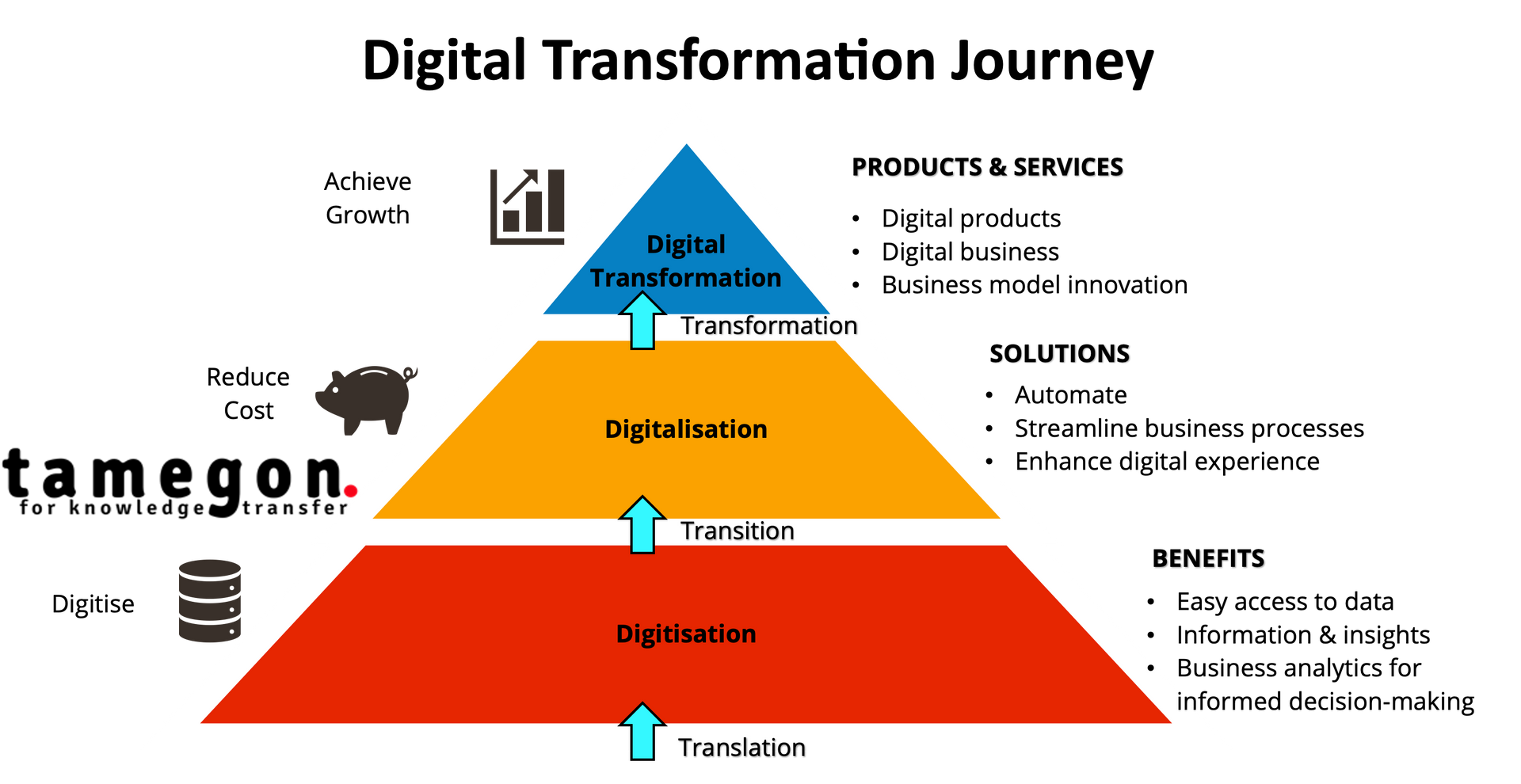From digital change, to transformation and even metamorphosis - What do they all mean?
Dr Costas Chryssou
June 8, 2023
tamegon Innovation and Growth Advisory Firm
Digital transformation (DT) market is projected to grow at a higher than 20% compounded annual growth rate from 2023 with an associated spending of 1.6 $trillion in 2022 and a projected spending forecast of 3.4 $trillion in 2026. Although this astonishing growth is attributed mainly to the Covid-19 pandemic, which since 2020 caused many organisations to increase significantly their investment and adoption of digital, there are many other contributing factors at play including changing customers' behaviours, preferences, and needs.
While digital transformation is a necessity for all organisations to remain competitive, the term is often overused, sometimes confusing businesses and practitioners alike. Many times the terms digitisation, digitalisation, and digital transformation are used interchangeably, together with digital change and even metamorphosis.
So what do they all mean and what are their benefits for an organisation?
- Digitisation is about converting analogue data into digital form and it is the first step that organisations need to take in their digital journey towards digital transformation. Digitisation enables businesses to gain valuable insights from their data, leading to advanced business analytics and the capability of informed decision-making processes. By digitisation, many businesses, that still use manual processes to interact with their customers, can move a step closer to enhancing their customer experience.
- Digitalisation, on the other hand, involves the change of workflows and the adaptation of organisational processes, procedures, and systems to enable the adoption of digital technologies. Through their digitalisation efforts, organisations can leverage digitisation to improve their business processes through automation, enrich their products or services, and offer enhanced value to their customers. For example, an organisation could be using digitised customer data, as gained from different sources, to automatically generate insights from their behaviour and inform existing products and services and create new ones. Although the transition path may not be linear, digitisation and digitalisation lead to digital transformation.
- Digital transformation builds on the above described digitisation and digitalisation efforts and prepares organisations to leverage their knowledge and integrate it in all business areas to enhance customer engagement and experience, innovate their business model, and create new value. By utilising digital technologies, successfully implemented digital transformation projects make organisations more agile in responding to changing markets and disruptive business models, thereby making them more resilient to external disruption. Through digital transformation, organisations can achieve significant growth and gain competitive advantage.
“…Digital transformation is the integration of digital technology into all areas of a business, fundamentally changing how it operates and delivers value to customers…”

- Digital change refers to incremental improvements or upgrades to existing digital systems and technologies. Although valuable, digital change or digital modernisation does not usually result in significant and transformative change that digital transformation makes possible.
During digital transformation organisations metamorphose; they change their "shape" and "form", redefining and refining the core of their business. Digital transformation is much more than being present in social media, or implementing the latest digital technology, or a digital solution for a specific business function of the organisation. When used well, it transforms the organisation by enhancing productivity and innovation.
Digital transformation when it is successfully accomplished impacts three main enterprise areas,
- Customer experience — achieving customer intimacy, using technology to enable and accelerate customer growth, and creating more value-adding customer touch-points.
- Operational processes — streamlining internal processes by leveraging digitisation and automation, reducing costs by supporting employees with digital tools, collecting data to monitor performance, and making data-informed strategic business decisions.
- Innovative business models — developing innovative disruptive business models by augmenting physical offerings with digital tools and services and using technology to provide global shared services.

“…Digital transformation should not be seen as a panacea…”
However, digital transformation should not be seen as a panacea to all challenges that organisations face or to remaining competitive. One key challenge that transformation leaders face is how to drive innovation within their organisation and how to improve productivity. Digital transformation can provide answers to both of these enterprise areas, but implementation should start with setting up an appropriate strategy clearly articulating the
benefits
that the organisation is aiming to achieve through the digital transformation project.
But more about how to successfully implement digital transformation projects on my next article.

Costas Chryssou
MBA, PhD
Founder and Managing Director
Sign up for our
articles
Sign up to our newsletter











